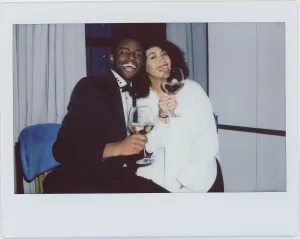Planning an LGBT wedding is a unique and meaningful process that requires thoughtful consideration and attention to detail. From choosing the perfect venue to selecting the right vendors, there are many factors to consider when planning a wedding that celebrates love between individuals of the same gender. One of the first steps in planning an LGBT wedding is to clearly define your vision for the day. Discuss with your partner what elements are most important to both of you, whether it’s a traditional ceremony or a more modern celebration that reflects your unique love story. Take the time to envision the atmosphere, overall theme, and the emotions you want to convey on your special day.
Understanding Your Vision
Personalizing Your Theme
Your wedding should be a reflection of your personalities and relationship. Sit down with your partner and brainstorm ideas that resonate with both of you. Think about the colors, motifs, and elements that represent your journey together. For instance, if you both love traveling, consider integrating maps or globe decorations. If music brought you together, incorporate live performances or a special playlist.
Setting a Budget
Before diving deeper into planning, establish a realistic budget. Discuss your financial boundaries and prioritize expenses. Allocate funds for key aspects like the venue, attire, catering, and photography, and identify areas where you can save. Research shows that the average wedding costs around $30,000, but remember, meaningful doesn’t have to mean extravagant.
Choosing an Inclusive Venue
Finding the Right Fit
When selecting a venue for your wedding, it’s important to choose a location that is not only beautiful but also inclusive and welcoming to all couples. Look for venues that have experience hosting LGBT weddings and are committed to creating a safe and supportive environment for all guests. Consider visiting potential venues in person to ensure they align with your vision and values, and don’t hesitate to ask about their experience with LGBT weddings and how they accommodate diverse couples.
Outdoor vs. Indoor Venues
Decide whether you want an outdoor or indoor setting. Outdoor venues, such as gardens or beaches, offer natural beauty and open spaces, perfect for a relaxed vibe. Indoor venues like historic buildings or modern lofts provide elegance and weather control. Consider the season, guest comfort, and logistics when making your choice.
Working with LGBT-Friendly Vendors
Conducting Thorough Research
From florists to photographers, choosing vendors who are supportive of the LGBT community is essential when planning an LGBT wedding. Research and reach out to vendors who have experience working with same-sex couples and are committed to helping you bring your vision to life. Seek recommendations from other LGBT couples, read reviews, and schedule meetings to discuss your preferences and ensure that your vendors understand and respect your unique needs and desires.
Crafting a Vendor Questionnaire
Prepare a list of questions to ask potential vendors. Inquire about their experience with LGBT weddings, their willingness to personalize services, and how they handle any potential issues. A simple question like, “What was your favorite LGBT wedding you’ve worked on?” can reveal their enthusiasm and expertise.
Customizing Your Ceremony
Writing Personal Vows
One of the most special aspects of planning an LGBT wedding is the ability to customize your ceremony to reflect your unique relationship. Whether you choose to write your own vows, incorporate cultural traditions, or create a symbolic ritual, make sure your ceremony truly represents who you are as a couple. Writing personal vows allows you to express your deepest feelings and promises in your own words.
Incorporating Symbolic Rituals
Consider adding symbolic rituals such as a unity candle lighting or sand ceremony. These can beautifully illustrate the joining of your lives. You might also explore cultural or spiritual traditions that resonate with you both, adding depth and meaning to your ceremony.
Selecting an Inclusive Officiant
Find an officiant who supports your love and understands your vision. They should be open to customizing the ceremony and incorporating your personal touches. Meet with potential officiants to discuss your expectations and gauge their enthusiasm for your wedding.
Celebrating with Loved Ones
Crafting a Thoughtful Guest List
Finally, remember that your wedding day is a celebration of your love and commitment, surrounded by friends and family who support you. Create a guest list that includes all the important people in your lives and take the time to honor and celebrate your relationships with those who have helped shape your love story.
Planning Inclusive Seating Arrangements
Consider how to arrange your seating to promote interaction and comfort. Opt for mixed seating to encourage mingling or group guests with common interests. Avoid traditional sides like “bride” and “groom” to foster an inclusive atmosphere.
Enhancing the Guest Experience
Creating a Warm Welcome
Welcome your guests with a thoughtful touch. Consider a personalized welcome bag with essentials like water, snacks, and a thank-you note. Include a program outlining the day’s events, so everyone knows what to expect.
Designing a Unique Reception
Make your reception memorable with personalized elements. Consider a DIY photo booth with props related to your love story or a guest book where attendees can leave personal messages. For entertainment, think about hiring a DJ who understands your music preferences or a band that can play your favorite songs.
Acknowledging Supportive Friends and Family
Consider including special moments during the reception to acknowledge and appreciate your guests, such as dedicating a toast or dance to loved ones who have been instrumental in your journey as a couple. This not only honors their support but also strengthens your bond with them.
Legal Considerations and Rights
Understanding Marriage Equality
Ensure you understand the legal aspects of marriage equality in your area. While many places recognize LGBT marriages, it’s crucial to know the specific requirements and rights available to you. Research local laws or consult a legal expert to navigate any complexities.
Handling Name Changes and Documentation
If either partner plans to change their name post-wedding, start the process early. Update your identification documents, bank accounts, and other legal paperwork. This can be a time-consuming task, so having a checklist can help streamline the process.
Tackling Common Challenges
Dealing with Unsupportive Family Members
Sadly, not everyone may be supportive. If you anticipate challenges with family members, consider having honest conversations ahead of time. Set boundaries to protect your emotional wellbeing and ensure your wedding remains a joyful occasion.
Handling Vendor Discrimination
While rare, discrimination from vendors can occur. Trust your instincts and walk away from any vendors who don’t respect your needs. Consider reporting discriminatory behavior to local LGBT advocacy groups to help protect future couples.
Staying True to Yourselves
Embracing Uniqueness
Remember, this is your day. Don’t feel pressured to conform to traditional expectations if they don’t resonate with you. Whether it’s walking down the aisle together or having a non-traditional wedding party, make choices that reflect your true selves.
Enjoying the Planning Process
Planning a wedding can be stressful, but it’s also a unique opportunity to bond with your partner. Take time to enjoy the process and create lasting memories. Whether it’s a cake tasting or a venue tour, cherish these moments together.
Conclusion
Planning an LGBT wedding is a beautiful journey that allows you to celebrate your love in a way that feels authentic to you. By focusing on inclusivity, personalization, and support, you can create a day that reflects your unique love story. Embrace the opportunity to honor your relationship, celebrate with loved ones, and lay the foundation for a lifetime of happiness together.



